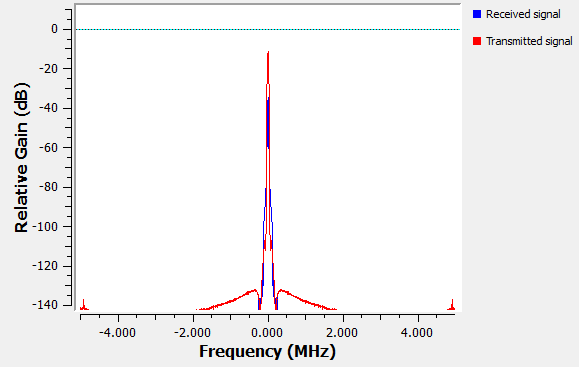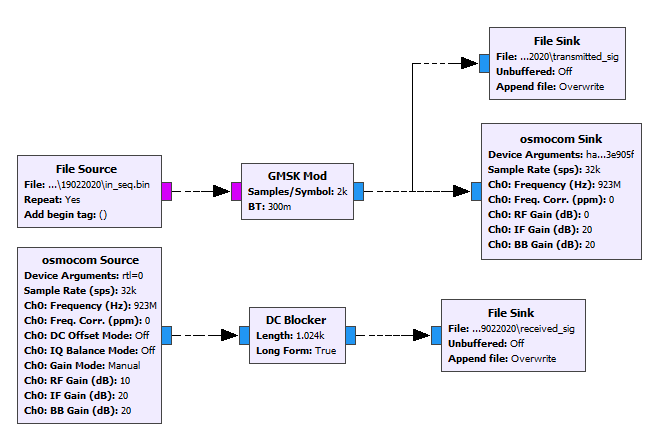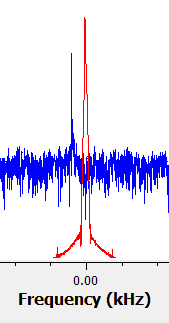Em qui., 25 de jun. de 2020 às 10:35, Artur Nogueira <artur.nogsj@gmail.com> escreveu:
Yes, you're right: 2000 samples is too much. I made measurements with different numbers of samples (2, 500 and 2000) because I was afraid a very slow number (e.g. 2) could cause aliasing in the base-band.Regarding the offset, it is indeed constant and for experimentation.I had not realized before this correction field on the Osmocom block - I'll take a look at it; thanks.What I'm trying to do is to apply a mixer tuned to the offset frequency after the Osmocom Source block. The result seems to be ok:Without the frequency correction:With the frequency correction:Do you think this is reasonable?Em qua., 24 de jun. de 2020 às 18:32, Jeff Long <willcode4@gmail.com> escreveu:By the way, 2000 samples per symbol is kind of high. It's usually something like 4.Also, if the frequency offset is constant and this is just for experimentation, you can use a frequency translating filter, or possibly the frequency correction field on the osmocomm blocks (can't remember if it's passed through to the hackrf code).On Wed, Jun 24, 2020 at 5:21 PM Jeff Long <willcode4@gmail.com> wrote:Depending on the bandwidth of your signal, that could be a lot of offset, and you might need a PLL to do frequency correction. That's 130 ppm, which is a little more than you should see between two HackRFs.On Wed, Jun 24, 2020 at 5:13 PM Artur Nogueira <artur.nogsj@gmail.com> wrote:Thanks a lot.I'll read the block specifications.And yes, the offset is small (120 kHz).Em qua., 24 de jun. de 2020 às 17:53, Jeff Long <willcode4@gmail.com> escreveu:Assuming the difference is small enough, this is a normal RX problem that a GMSK demod should be able to handle. The labels on your frequency plot do not say what the offset is, but hint that it is small. Take a look at gmsk.py to see how it's handled in the built-in demod.On Wed, Jun 24, 2020 at 4:10 PM Artur Nogueira <artur.nogsj@gmail.com> wrote:Hi Jeff,Thanks for the feedback.I'm using GNU Radio Version 3.7.13.5 and two Great Scott Gadgets HackRF units for the transmission/reception.My workflow looks like this:Do you usually use any artifact to compensate for this frequency shift?I'm afraid this could affect demodulation and therefore the BER.Best regards,ArturEm qua., 24 de jun. de 2020 às 16:31, Jeff Long <willcode4@gmail.com> escreveu:Artur,You haven't mentioned what software you are using, how you have it configured, or what your flowgraph looks like.If you are using two SDRs and the frequency difference is a few kHz, then that is just oscillator differences.On Wed, Jun 24, 2020 at 3:12 PM Artur Nogueira <artur.nogsj@gmail.com> wrote:Hi everyone,I'm comparing the spectra of a pair of transmitted/received GMSK signals (carrier frequency = 923 MHz).As expected, there is a certain channel attenuation.Nevertheless, there is this frequency deviation at the Osmocom Source output:I suppose this is something related to the receiver hardware.Do you have a suggestion on how to compensate for this effect at a software level?Best regards,Artur



